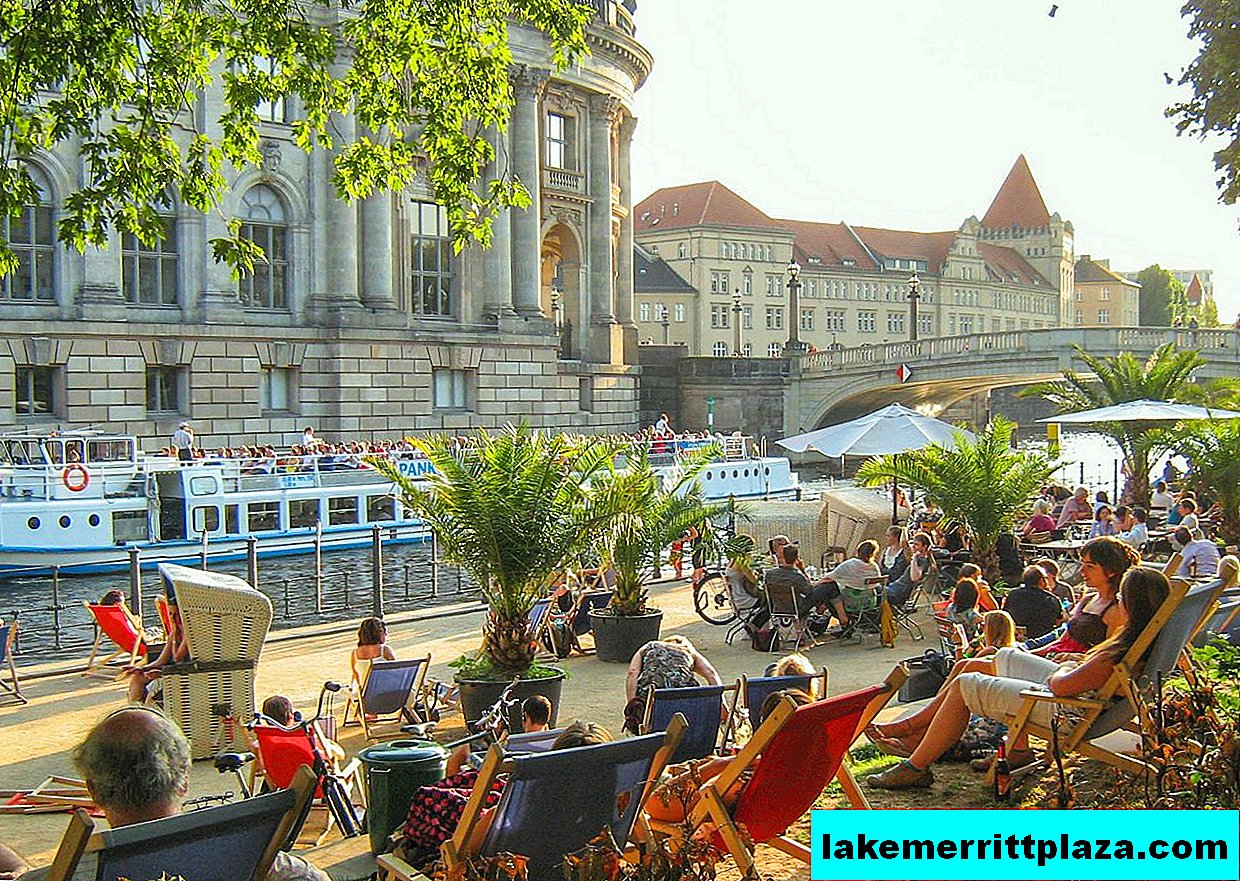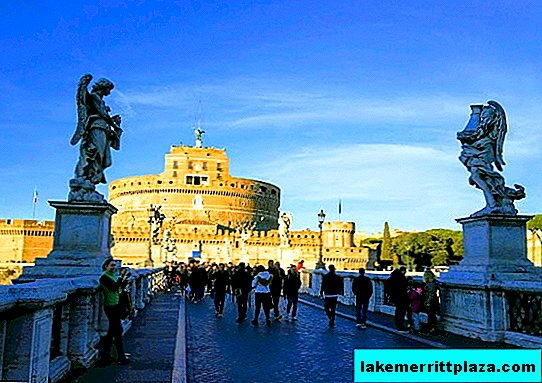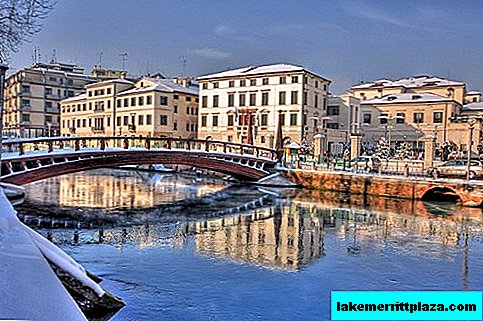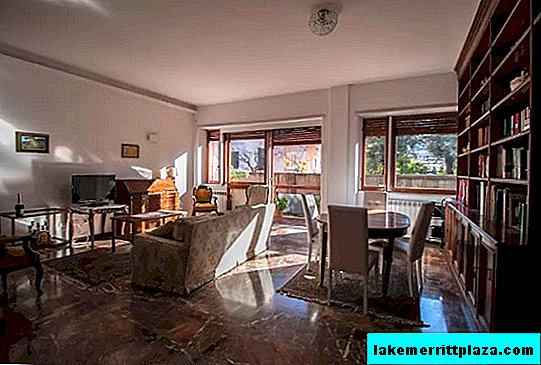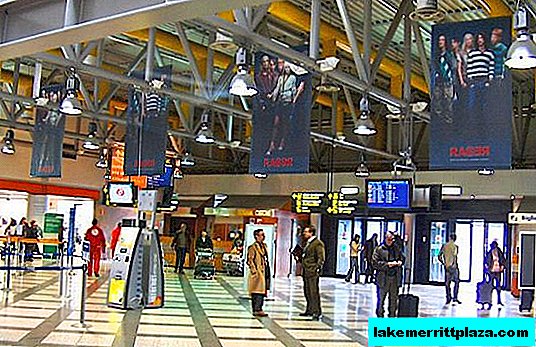Marburg is fascinating. It seems: here the rooster will sing at the city hall, heralding the beginning of the performance of stray comedians; to the ringing of bells and singing of prayers, a procession of barefoot Franciscan monks will set off through the streets; and a cavalcade of knights will leave the castle gates to the sound of fanfare to fight the dragon.

Marburg
German sketches. Part I
German sketches. Part II
German sketches. Part III
German sketches. Part iv
German sketches. Part v
German sketches. Part VI
German sketches. Part VII
German sketches. Part VIII
German sketches
Part IX. Marburg A fairy tale frozen in stone
The trip to Marburg was the final and, perhaps, the most sonorous and beautiful chord of our trip to Germany. The names of many world-famous people are associated with this ancient German town. A brief and, at the same time, very accurate description of the city was given by Nobel Prize winner in literature, Boris Pasternak, who called Marburg “the city of medieval fairy tales”. And the famous brothers Jacob and Wilhelm Grimm, who lived here during their studies at the University of Marburg, were surely imbued with the fabulous atmosphere of the city, which later helped them in their work. I think that there is not a single person who, having visited Marburg, would not have admired this reserve of medieval romance. However, first things first.
Marburg is located in the federal state of Hesse. From the town of Kreuztal, where we lived, it is about 70 kilometers. Overcoming this distance by car, and staring idly at the sides, we found that there are significant differences between Hesse and the Westphalian Siegerland, where Kreuztal is located. Unlike the very hilly Siegerland landscape, the hills in Hesse are much lower and the fields are much wider. The roofs of houses in the towns and villages of Hesse are mainly covered with traditional red clay tiles. Although, in some places, including in Marburg itself, there are houses where Siegerland gray-black shale tiles are used as a roof.
When approaching the city, it is difficult not to notice the lonely tower standing on a wooded hill. At the sight of it, lovers and admirers of Hollywood cinema art may recall the heroine of the animated film Rapunzel: A Tangled Story, which was based on the fairy tale of the Brothers Grimm, languishing for many years in a similar tower.

Kaiser Wilhelm Tower
You see, they have not yet entered the city, but some kind of fabulous associations are already emerging. In fact, in this tower they never kept in captivity the golden-haired fairy-tale beauties. This is the Kaiser Wilhelm observation tower. It is named after the Prussian king and German emperor Wilhelm I and was built relatively recently, at the end of the XIX century. In this case, everything is very simple and prosaic. But here we enter Marburg and immediately plunge headlong into the world of fairy tales, ancient history and ancient architecture.
For me, old Germany is, first of all, half-timbered houses. And definitely gothic. And the more of all this, the better. Perhaps many of my ideas about Germany will cause a smile. In this case, I ask more sophisticated travelers to be more condescending - because my image of medieval Germany was formed under the influence of fairy tales read by the brothers Grimm and other European storytellers in childhood. As a rule, the books of these authors were illustrated with pictures, which were often attended by pretty half-timbered houses, high spiers of Gothic churches and towers of knight's castles. Anyway, but the real look of Marburg completely coincided with my children's associations.
Marburg is a small city with a population of about 80 thousand people. It is located on the banks of the river Lahn, the right tributary of the Rhine. The dominant feature of the city is the high Schlossberg hill, on top of which stands the medieval castle of the Landgraves of Hesse.
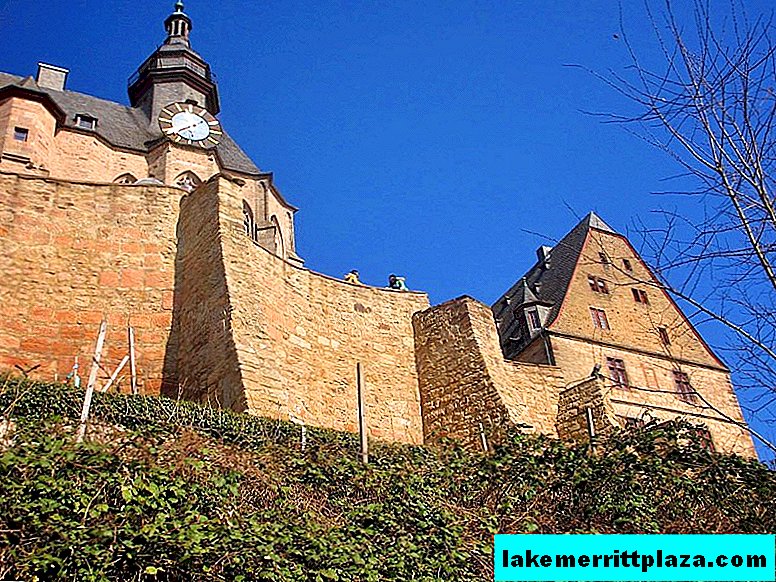
Hesse Landgraves Castle
Immediately make a reservation, about the castle and another major attraction of the city - the University of Marburg will tell you more in the next part of the report.
On the slopes of the hill on which the castle stands, those same numerous half-timbered houses climb up. They are here for every taste and color.
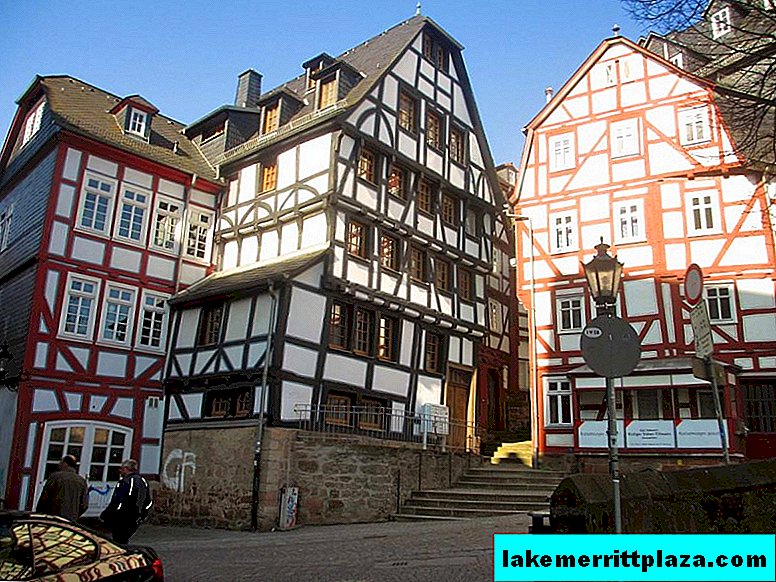
Marburg Fachwerk

Marburg Fachwerk
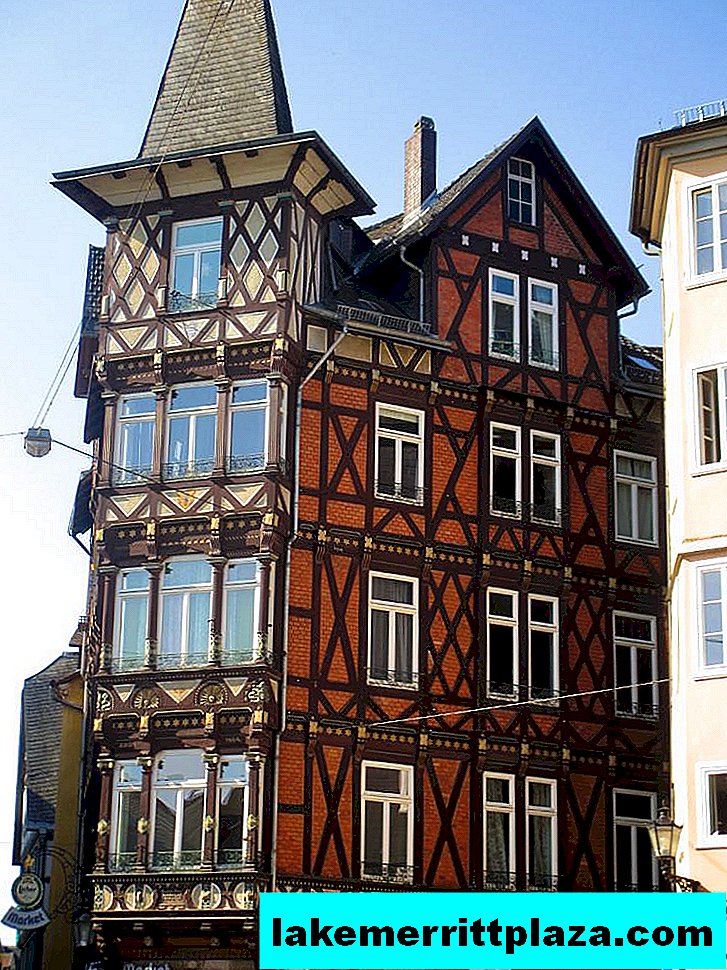
Marburg Fachwerk

Marburg Fachwerk
Upstairs, to the castle, located in between the houses, there are numerous stairs. One of the Grimm brothers, tired of walking on these stairs, said: "In Marburg there are more steps on the streets than there are houses."

One of the many street stairs
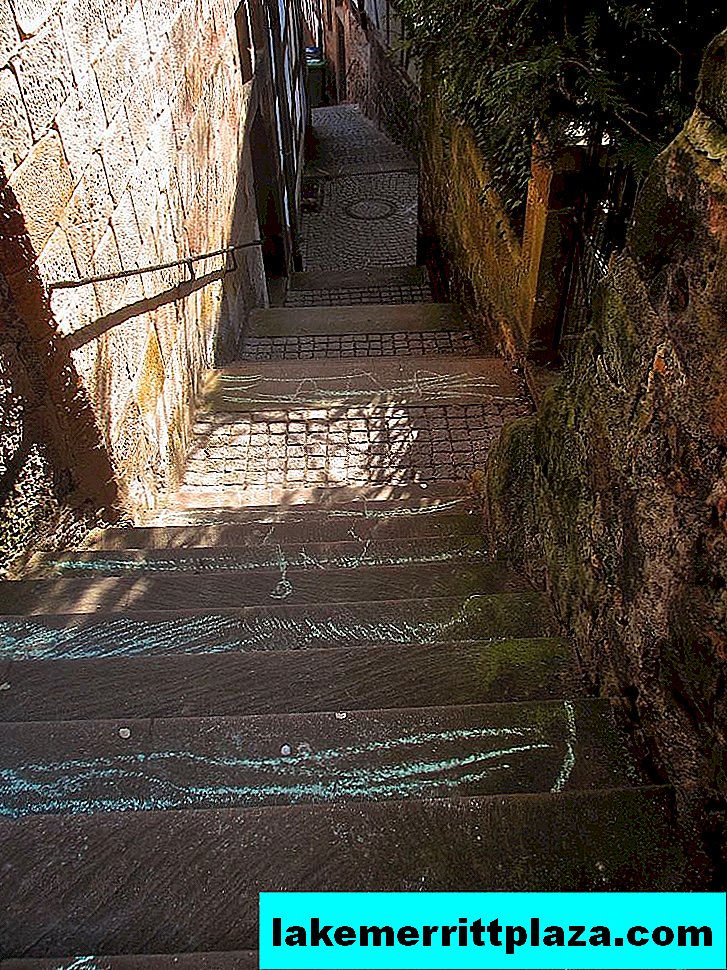
And this is both a street and a staircase

Step up and down
Anyone who climbs to the top of the hill from the university and Marktplatz square will either go directly or walk in the immediate vicinity of the Lutheran Church of the Blessed Virgin Mary.
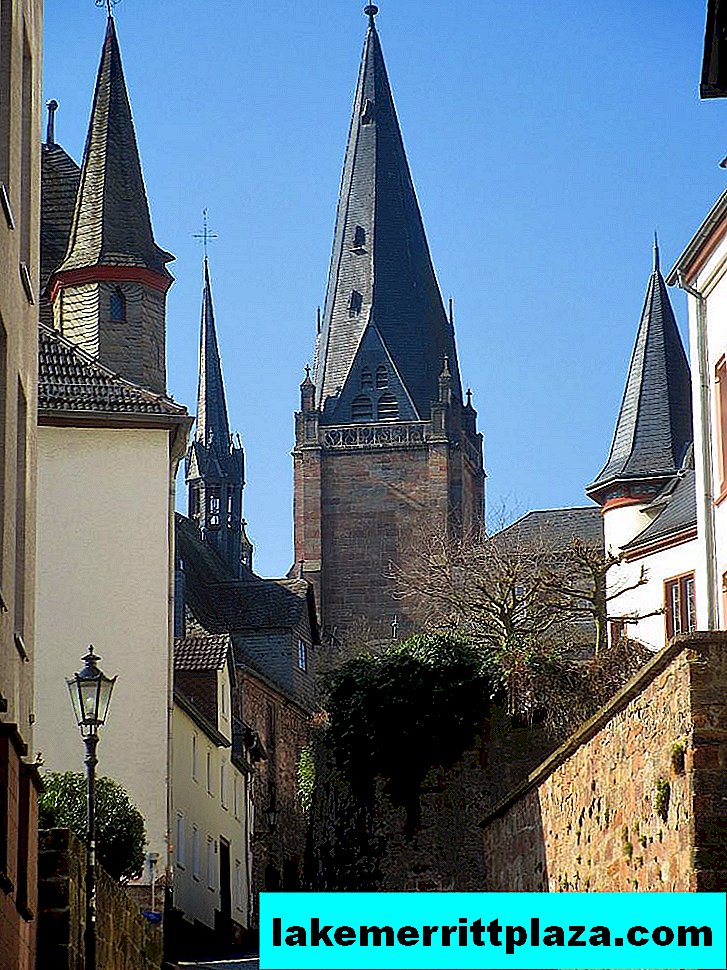
View of the Church of the Blessed Virgin Mary from the road to the castle
This church stands next to the Landgrave castle, just below the hillside. When viewed from above, from the side of the castle, first of all, a tower topped with a high spire catches your eye. The peculiarity of this spire is that it is curved.

The peculiar spire of the Church of the Blessed Virgin Mary
No, he, of course, is not tilted like the Leaning Tower of Pisa, but its shape, nevertheless, is quite sufficient to unpleasantly strike the viewer's eyes, accustomed to the strict grace and correctness of the lines inherent in the Gothic buildings. Probably, many, standing on the observation deck next to the castle and looking down at the church, thought: "Hands should be cut off to the one who did it!".

"M-yes ... And the spire is crooked, however ..."
I would not be surprised at all if a source pops up confirming that this is exactly what they did to the masters who erected this spire. Times were old, morals were harsh and the dictum “Let everyone be rewarded according to his deeds” was very popular.
Next to the Church of the Blessed Virgin Mary, a fun change-over attraction has been set up, the triune essence of which is represented by the images of Little Red Riding Hood, Grandmother and Gray Wolf.

"I'm an evil and scary Gray Wolf ..."

"And I am a kind and beautiful Little Red Riding Hood ..."
It is rather unexpected to see such a thing near the temple of God, however, one cannot but admit that this object fully fits into the concept of a city with a fabulous atmosphere. Right next, a witch flies on a broomstick.
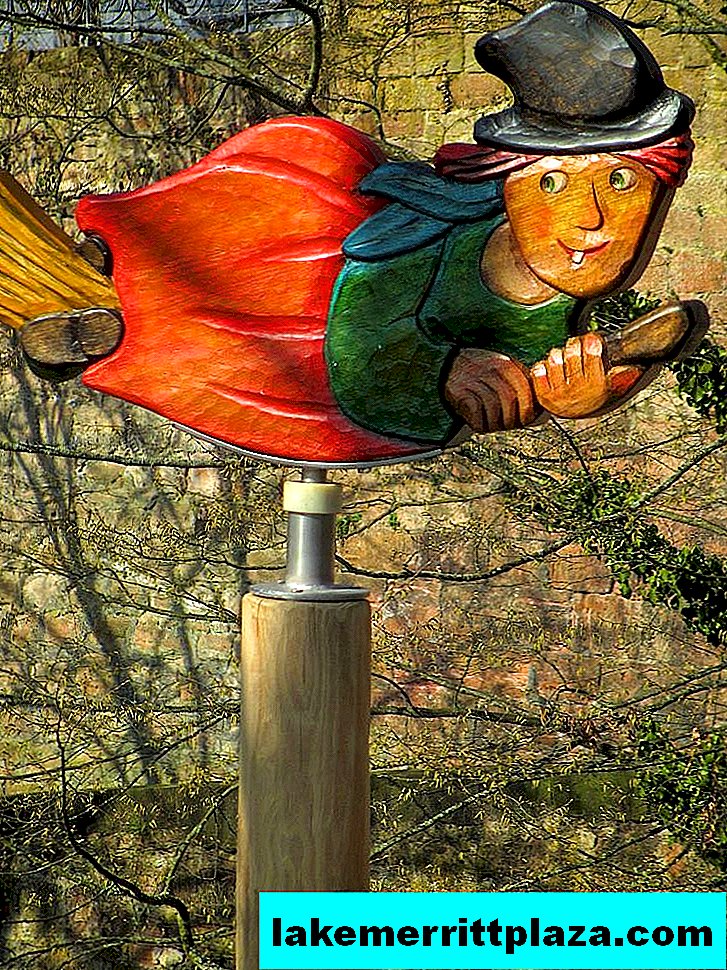
One of the Marburg witches
From the observation platforms located next to the castle, a beautiful view of the old city quarters opens.
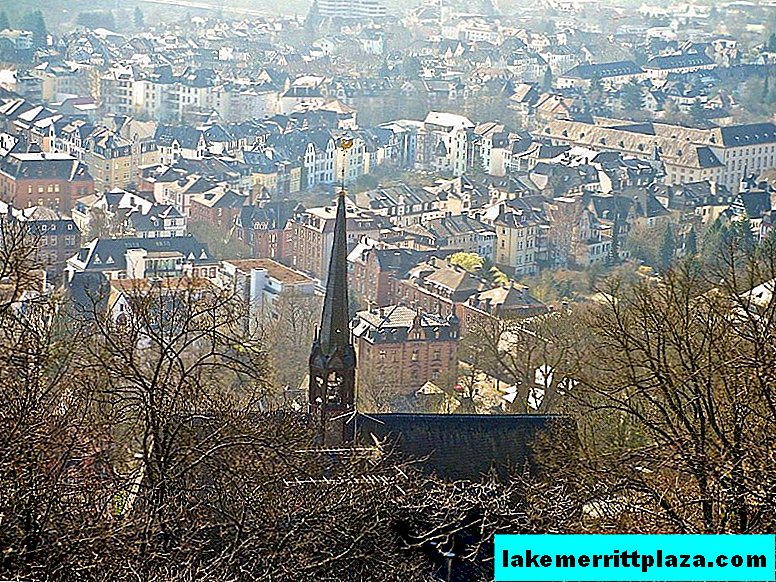
View of the historic city center from the castle
From the top of Schlossberg another well-known temple of the city is clearly visible - the church of St. Elizabeth.

Church of St. Elizabeth (view from the castle)
This church was erected by the Teutonic Order in the second half of the 13th century. It is one of the first Gothic churches in Germany and the largest and tallest church in Marburg (towers about 80 meters high).
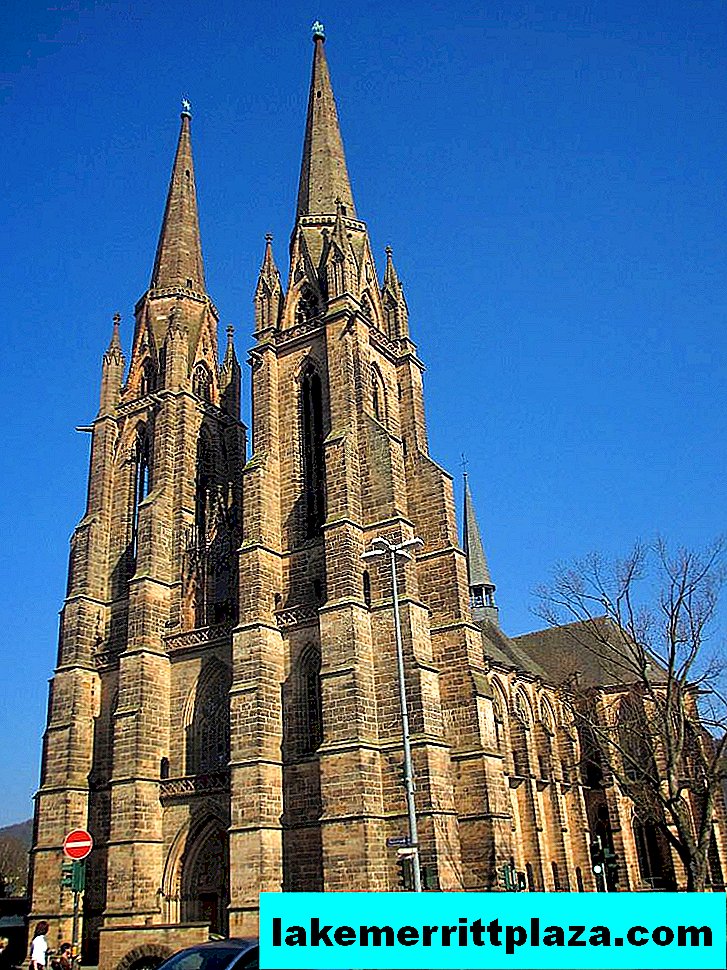
Church of St. Elizabeth in Marburg
Saint Elizabeth, whose remains are kept in the church, lived a short but vibrant life. She was a person who deserves to be told more about her.
This amazing woman, who in her earthly life was the daughter of the King of Hungary Andras II and the wife of the Landgrave of Thuringia Ludwig IV, very early imbued with the teachings of St. Francis of Assisi and led a way of life that, asceticism was slightly different from that of the mendicant Franciscan monks. However, she not only devoted much time to fasting and prayer, renouncing most of her wealth. Using her high social status, Elizabeth was engaged in charity work - she helped the poor and sick, donated a lot to the maintenance of hospitals and shelters. Marburg's Landgrave Castle has a bas-relief depicting Elizabeth caring for the sick.

Bas-relief in the landgraff castle
I can’t say for sure who the man depicted in the bas-relief on the left is. I would venture to suggest that this is Elizabeth's husband — the landgrave Ludwig IV of Thuringia, who received the nickname of the Holy for his piety. You must admit that this nickname is much more honorable than, for example, Carl the Simple or John Landless. Ludwig took part in the sixth crusade, where he disappeared, dying of a fever in Italian Otranto and never reaching the Holy Land - Palestine. Since, unlike his wife, during his lifetime he was not seen performing any miracles, the church did not consider his honorary nickname a sufficient basis for his canonization.
After the death of her husband, Elizabeth took a vow of celibacy and in 1228 she moved from the Landgrave residence in Eisenach to a small modest Marburg, where she established a hospital and devoted herself entirely to helping the poor and treating the sick.
It should be noted that for that time the behavior of the Landgrafine of Thuringian was not something out of the ordinary. In the cruel era of the Middle Ages, when human life was cheap, and people, regardless of their social status and property status, did not live long, there were a sufficient number of righteous people who sacrificed their wealth in the name of Christian love for their neighbors. Many remembered that "it is easier for a camel to go through the eye of a needle than for a rich man to go to heaven." Elizabeth was not the only saint of her kind. Her native aunt, the wife of the Duke of Silesia, Henry I the Bearded, Saint Jadwiga of Silesia, who, taming her sinful flesh, walked barefoot on snowy land in winter, was also noted for religious zeal.
It is not known what caused the exhaustion of forces due to an extreme degree of asceticism, to which Elizabeth was forced by her confessor Konrad of Marburg (a frantic religious fanatic, Dominican inquisitor, a fiery fighter with heresy and a preacher of the Crusades), or contracting an incurable disease during work in the hospital, but after three years of living in Marburg in 1231, the landgrain of Thuringia Elizabeth of Hungary died, having lived in this world for only 24 years. Four years after her death, she was canonized and, over time, became one of the most revered saints in all of Germany. Now the charming fairytale town of Marburg is under its heavenly protection, with which I sincerely congratulate its inhabitants.
Already descending from the top of the Schlossberg hill, we went out to the house in which Mikhail Vasilievich Lomonosov, a student at the University of Marburg, lodged from 1736 to 1739. Yes, that one.
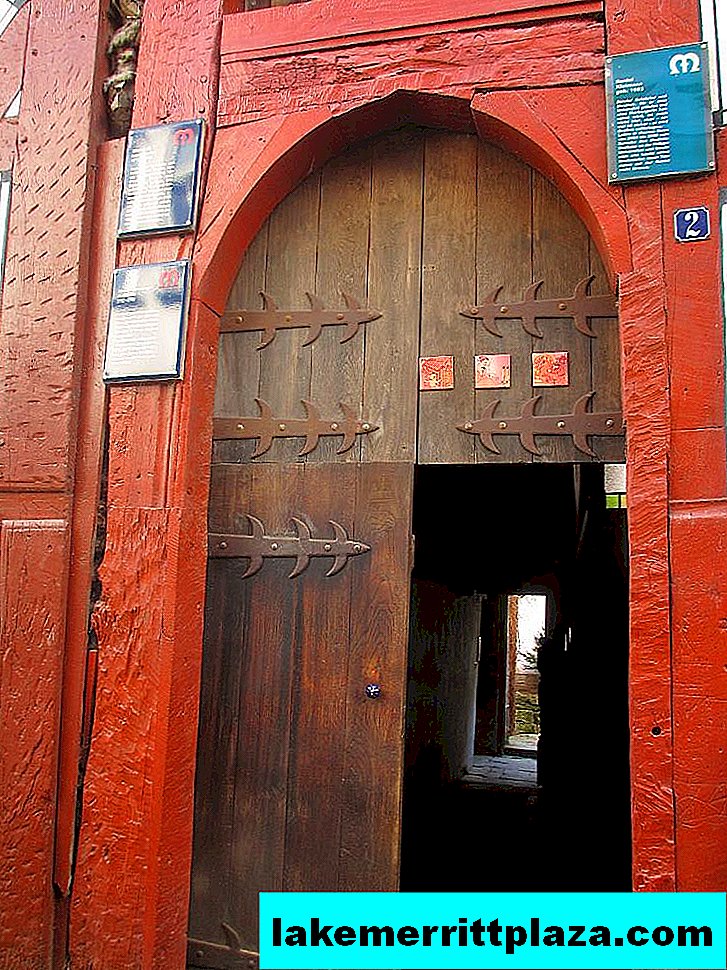
Entrance to the house where M.V. Lomonosov

Memorial plaque
In addition to him and Boris Pasternak, whom I already mentioned, who in 1912 studied philosophy at a local university for one semester, Bulat Okudzhava was a few times famous Russian people in Marburg. It is said that Bulat Shalvovich liked to sit in this cafe located next to the university.

"Vetter" - Bulat Okudzhava's favorite cafe
All houses where famous Russians lived have memorial plaques in Marburg. To this, as well as to the popularization of Russian culture as a whole, one remarkable woman had a hand - professor of the University of Marburg, Slavic scholar Barbara Karhoff.
The center of the historical core of the city is the market square - Marktplatz, on which stands the old city hall, built at the beginning of the 16th century. It still houses the services of the city administration.

City Hall in Marburg

Doors of the Marburg City Hall
And here is the clock on the town hall with that same cock

Marburg Town Hall Clock
(the cock, however, is practically indistinguishable in the photo), about which of the literary critics-okudzhavovedov only lazy did not write. Poor Bulat Shalvovich, who managed to write the line “When the Rooster Over the Marburg Cathedral ...” is probably turned upside down when another connoisseur of his work writes something like this on his blog: “And here it is. The error came out. above the cathedral, and above the town hall. Yes, sir. By all means above the town hall ... "
Next to the town hall is a monument to one of the daughters of St. Elizabeth - the Duchess of Sofia Brabant.
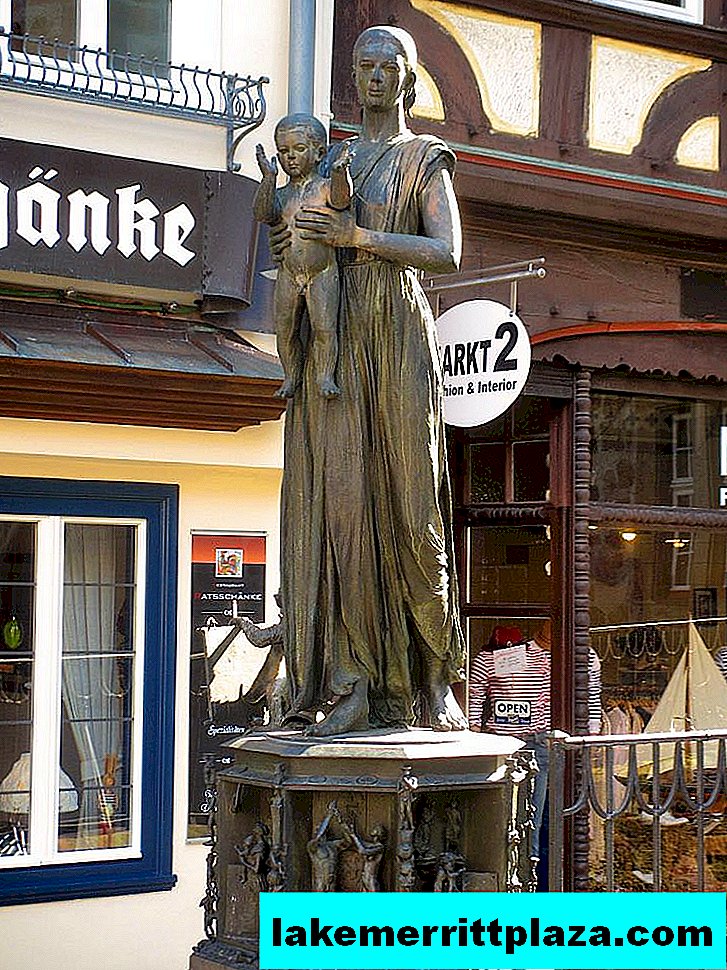
Monument to the Duchess of Sofia Brabant
The Marburgers erected this monument in gratitude to the Duchess for the fact that in 1264 she founded the new principality of Hesse, was her ruler for several years, and Marburg made the residence of the Hessian landgraves.
In the middle of the XIII century, due to the lack of male heirs, the dynasty of landgraves of Thuringia was interrupted, which caused a long war for the rich Thuringian inheritance. Sofia Brabant, since the last three landgraves were alternately her father, brother and uncle, intervened in the feud. As a result of the war, Thuringia broke up and one of its parts - Hesse, the emperor gave into possession of the son of Sofia Brabant. A little later, the owners of Hesse received the title of landgraves. Take another look at the photograph of the monument. The baby Sofia holds in her arms is the future Landgrave Henry I of Hesse.
Next to the town hall and the monument is a house on which giant "flies" sit.

Marburg "House with flies"
Perhaps in this way the townspeople immortalized the memory of seven insects that paid dearly for their love of plum jam. You probably remember that in one of the Grimm brothers' tales, these flies were overly carried away, lost control of the situation, and were killed with a brave tailor in one blow. This once again reminds us that one should approach any business, including eating jam, carefully and calmly, without excessive fanaticism.
In the center of Marktplatz is the St. George's Fountain, which, apparently, is the place of youth parties.

Fountain of St. George in Marburg
And, probably, the young Marburgers, making reference to the meeting, say: "Meet me at St. George."
Just as St. George patronizes Marktplatz Square, Batman and Spiderman guard the peace of citizens in one of the streets adjacent to the square.

Batman and Spiderman guard the city from bad guys
Whatever you say, fairy-tale characters in Marburg are found almost at every step, and when there is a shortage of heroes of German fairy tales, the heroes of Hollywood are used.
One of the most charming streets of Marburg is Steinweg. Here are the same half-timbered houses, the look of which is not even spoiled by shops and cafes located on the ground floors.
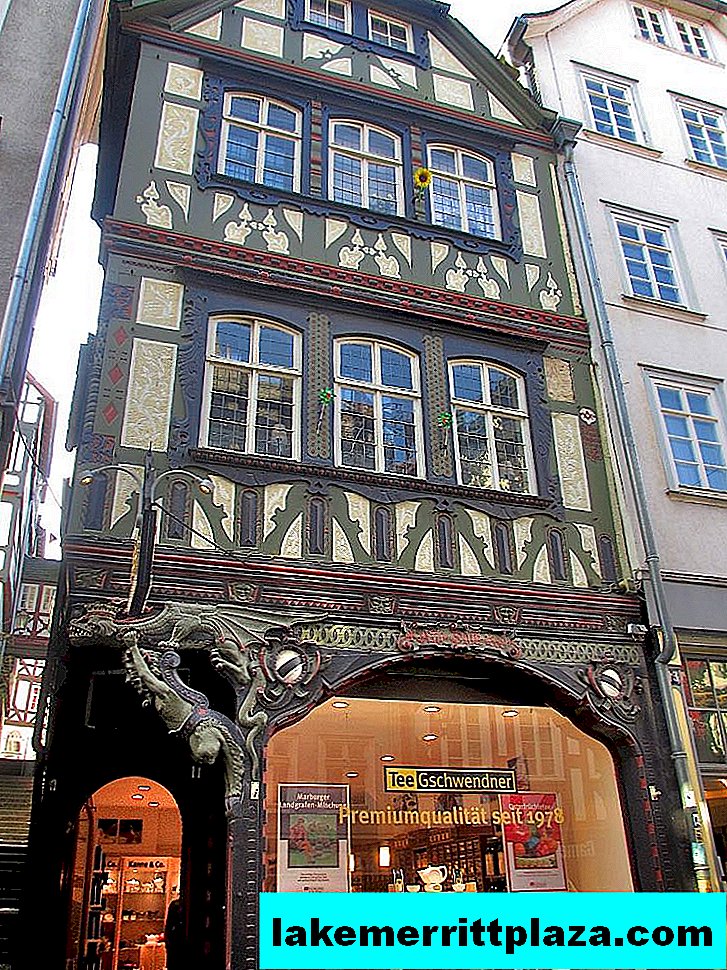
Marburg Street steinweg
On the contrary, these establishments give cute houses additional charm.
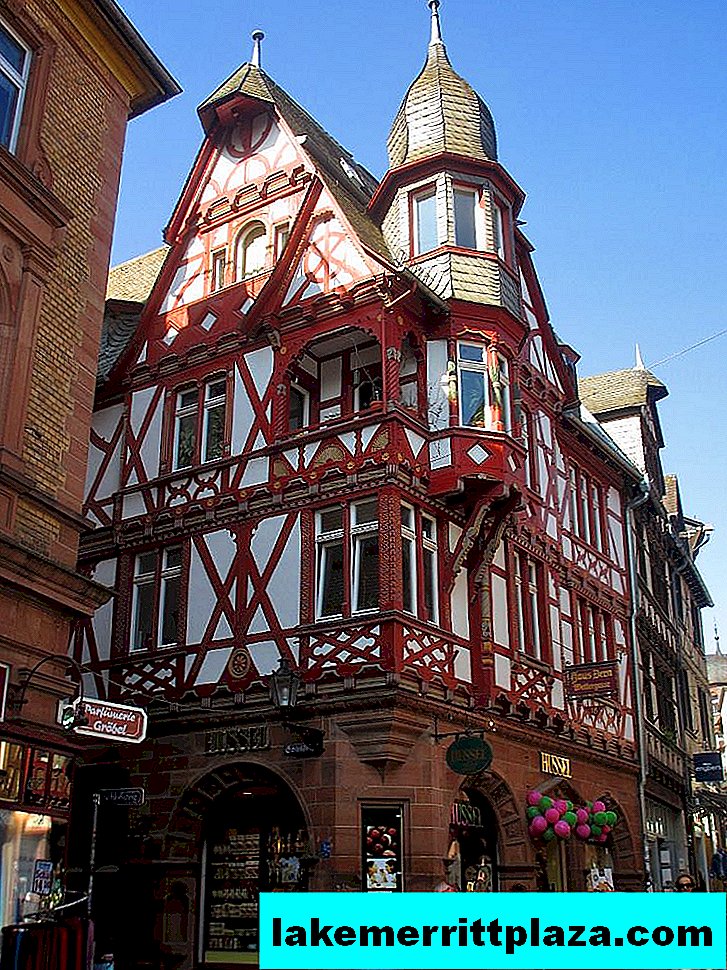
Marburg Street steinweg
Fachwerk, turrets, bay windows ... Sheer charm!
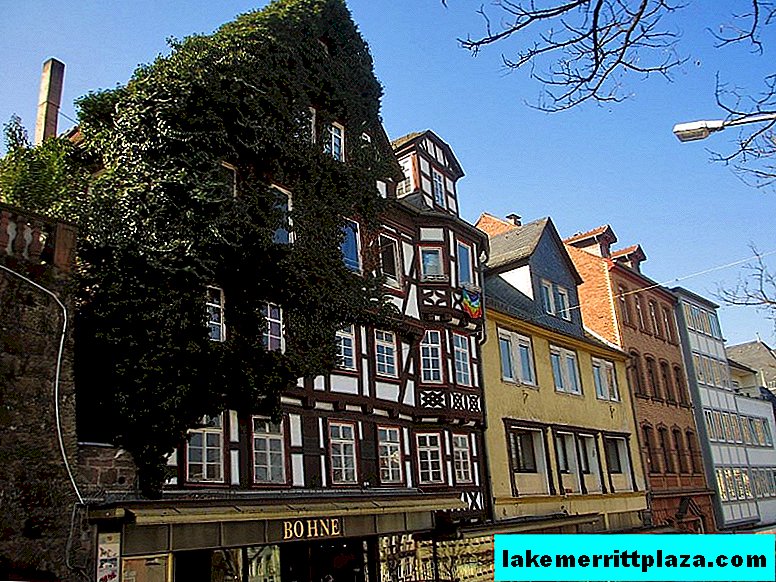
Marburg Street steinweg

Marburg Street steinweg
On this street there is a sculpture - a monument to the city courier-delivery Christian. Seeing him, one of the heroes of the famous comedy "Gentlemen of Fortune" could well exclaim: "Well, here he is - a man in a jacket!". Needless to say, this is one of the favorite places for tourist photo shoots.
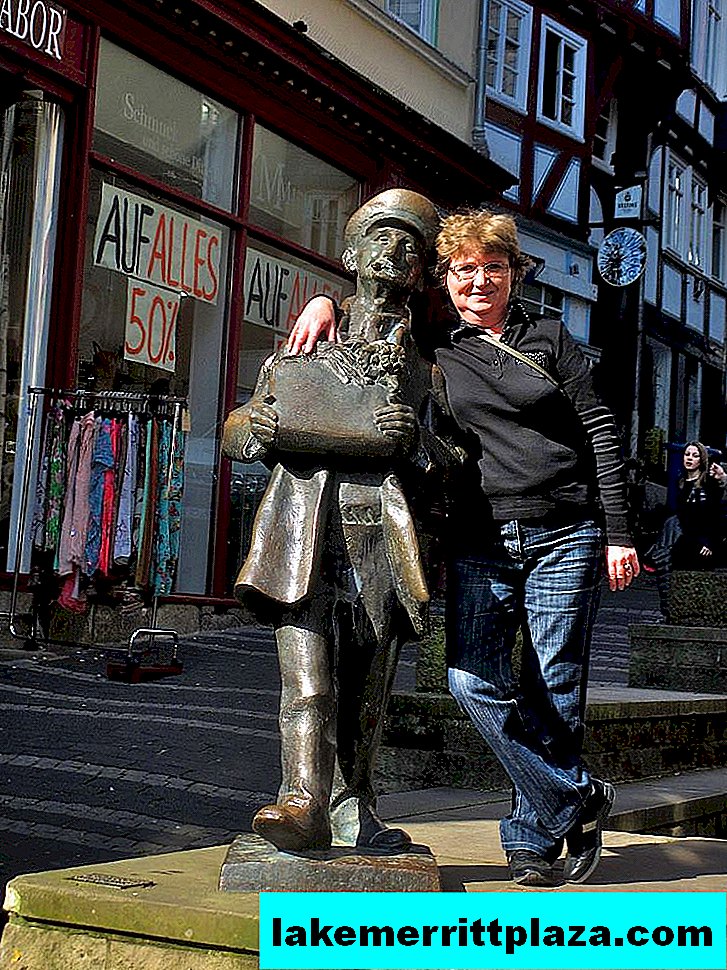
Photo for memory of Marburg
Taking a picture in an embrace with old Christian, you can continue the walk and walk to the wall on which there is a certain installation reminiscent of the heroes of the fairy tale "The Wolf and the Seven Little Kids."
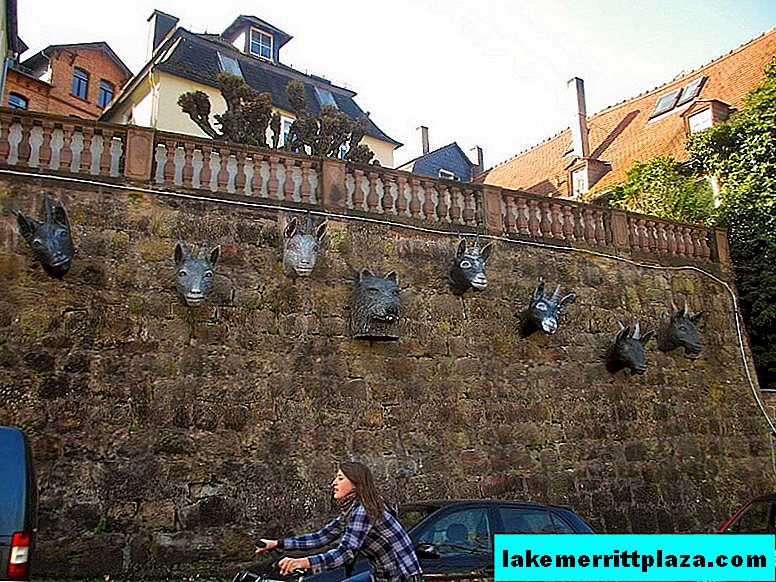
The wolf and the seven Young goats. Rather, what is left of them
And these are just horses. We assume that the very ones who saddled them, fairy-tale princes and knights set off towards adventures and exploits in the name of beautiful ladies.

Dashing Knight's Horses
Marburg is fascinating.Walking around it, you always wait for something unusual. It seems: here is another moment, and the rooster will sing at the city hall, heralding the beginning of the performance of stray comedians in the market square; to the ringing of bells and singing of prayers, a procession of barefoot Franciscan monks will go through the city streets; and a cavalcade of steel-bound knights will leave the castle gates to the sounds of fanfare heralds to fight a fire-breathing dragon flying to the city.
On this adventurous and romantic note, I will probably finish the ninth part of my report. In the next, final, part, I will finally talk about the most interesting episodes of the history of ancient Marburg, Landgrave Castle and the famous Marburg University. The ending follows.
German sketches. Part x


